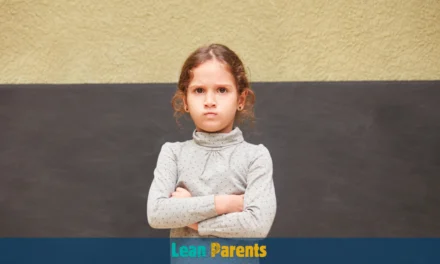As parents, we’ve all been there—frustrated, tired, and unsure of how to handle yet another meltdown or defiant behavior from our child. In these moments, it’s tempting to make impulsive threats: “If you don’t stop right now, we’re leaving!” or “No more TV for a week!” The problem is that more often than not, these threats go unfulfilled. Welcome to the empty threat parenting trap—a cycle many of us unintentionally fall into.
Empty threats not only fail to curb unwanted behaviors, but they can also erode trust between parent and child. Children quickly learn that consequences may never come, which leads to more boundary-pushing. Breaking free from this trap requires thoughtful strategies, clear boundaries, and, most importantly, consistency. This article explores seven effective ways to shift your parenting approach, moving from threats to a more constructive, positive discipline style that fosters respect, communication, and a stronger parent-child bond.

Understanding the Empty Threat Parenting Trap
Empty threats happen when parents make exaggerated promises of discipline that they either don’t intend or are unable to enforce. These threats might seem harmless or spur-of-the-moment, but they can lead to several problems. Children eventually learn that certain behaviors, even undesirable ones, won’t be followed up with real consequences.
Not only does this lead to more frequent behavioral issues, but it can also make children feel less secure. If boundaries are not clear or consistently enforced, a child might struggle with understanding limits, leading to emotional uncertainty.
In contrast, consistent discipline—where consequences match behaviors—creates a sense of security, helping children understand the link between actions and outcomes. So, how do you break the cycle of empty threats?
How to Break Free From the Empty Threat Parenting Trap

Acknowledge the Problem and Reflect on Your Patterns
The first step in breaking free from the empty threat parenting trap is to recognize when and why it happens. Reflect on moments when you’ve made threats you didn’t follow through on. What was your emotional state? Were you feeling overwhelmed, embarrassed in public, or simply exhausted? It’s essential to be honest with yourself about why these patterns exist, so you can move forward with intention.
Once you’ve identified these moments, you can start thinking about alternative strategies. By understanding the root cause—whether it’s stress, frustration, or lack of time—you’ll be better equipped to prevent similar situations in the future. Self-awareness is a powerful tool in transforming your parenting style.
Commit to Consistency and Follow Through
Consistency is the backbone of effective parenting. If you make a promise or issue a consequence, it’s crucial to follow through. This consistency builds trust and establishes clear boundaries for your child. It also teaches them that their actions have direct consequences, whether positive or negative.
Let’s face it—following through on consequences can be tough. No one likes to be the bad guy. However, enforcing the rules when necessary ensures that children respect and understand their limits. If you say, “We’re leaving if you don’t behave,” and your child doesn’t behave, it’s important to actually leave, even if it’s inconvenient. Over time, this teaches your child that you mean what you say.
Use Positive Reinforcement Instead of Negative Threats
Instead of relying on threats to modify your child’s behavior, try focusing on positive reinforcement. Rewarding good behavior encourages your child to repeat that behavior in the future. Praise, attention, or small rewards for doing the right thing can be more effective than constantly threatening punishment for wrongdoings.
For instance, instead of saying, “If you don’t clean your room, no TV for a week,” you could try, “If you clean your room, you can have extra playtime today.” This shifts the focus from avoiding negative consequences to seeking positive ones, which is a much healthier dynamic for both you and your child.
Set Clear and Realistic Boundaries
One of the key reasons parents resort to empty threats is a lack of clear boundaries. Without clear expectations, children may not fully understand what behaviors are unacceptable or what the consequences will be. Establishing realistic, age-appropriate rules will help you avoid making empty threats in moments of frustration.
Children thrive on structure and predictability. When they know what to expect, they are more likely to follow the rules. Communicate boundaries clearly and ensure they are realistic. For example, threatening to cancel an upcoming family vacation because your child didn’t eat their vegetables is unrealistic and likely unenforceable. Setting smaller, manageable consequences helps maintain credibility and encourages better behavior.
Remain Calm in Stressful Situations
It’s easy to let emotions take over when your child is acting out, but reacting out of anger or frustration often leads to hasty threats. The next time you feel yourself losing control, pause and take a deep breath before responding. Giving yourself a moment to calm down allows you to think more clearly and avoid making empty threats.
This may sound simple, but in the heat of the moment, it can be challenging. However, practicing mindfulness and patience will help you stay grounded during difficult situations. When you respond calmly, it also models emotional regulation for your child, showing them how to handle their own frustrations more effectively.
Use Natural Consequences When Possible
Natural consequences are a great alternative to imposed threats. These are the direct outcomes that naturally follow your child’s behavior, helping them learn responsibility and accountability. For example, if your child refuses to wear a coat, they might feel cold outside. If they forget their homework, they may receive a lower grade. These natural consequences teach valuable lessons without the need for artificial threats.
The key here is to allow these consequences to happen without stepping in to rescue your child. It can be tempting to prevent your child from experiencing discomfort, but doing so robs them of an opportunity to learn. By allowing natural consequences to play out, you empower your child to make better decisions in the future.
Focus on Communication and Connection
At the core of effective discipline is a strong parent-child connection. When children feel understood and valued, they are more likely to cooperate and follow rules. Rather than relying on threats to manage behavior, focus on open communication and building a strong emotional bond with your child.
Take time to listen to your child’s feelings and explain the reasons behind the rules. This fosters mutual respect and helps your child understand that boundaries are in place for their benefit, not just to control them. When children feel heard and respected, they are more likely to respond positively to discipline.
FAQs
How do I stop making empty threats with my child?
Start by reflecting on your patterns and committing to consistency. Setting clear, realistic boundaries and focusing on positive reinforcement can help reduce the need for threats.
What’s the impact of empty threats on children?
Empty threats erode trust and teach children that consequences are not real, leading to more behavioral issues and a lack of respect for authority.
Why is consistency important in parenting?
Consistency helps children understand that actions have consequences. It builds trust and ensures that boundaries are respected and followed.
How can I use positive reinforcement effectively?
Praise, attention, and small rewards can motivate children to repeat good behavior. Focus on what your child is doing right rather than threatening punishment for misbehavior.
What are natural consequences in parenting?
Natural consequences are the direct outcomes of a child’s actions. For example, if a child refuses to wear a coat, they will feel cold. This approach helps children learn responsibility without imposed threats.
Can staying calm really improve discipline?
Yes, staying calm allows you to respond thoughtfully rather than react impulsively. It also models emotional regulation for your child, teaching them how to manage their own emotions.
Breaking free from the empty threat parenting trap is a journey that requires patience, reflection, and consistent effort. By focusing on clear communication, natural consequences, and positive reinforcement, you can foster a healthier dynamic with your child—one built on trust, respect, and mutual understanding. No longer will you need to rely on empty threats to manage behavior, and your child will benefit from a more secure, structured environment where their choices are meaningful and respected.






Trackbacks/Pingbacks